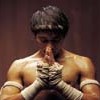Agam's Gecko


Saturday, March 15, 2008
SIXTH DAY OF PROTESTS IN TIBET
| T |
ibet has now seen six days of violence in its capital Lhasa, and in far distant rural areas of Amdo. During the first four days of peaceful marches by Buddhist monks and displays of Tibetan nationalism by regular citizens, the violence was meted out by Chinese security forces. On Friday and Saturday, citizens came into the streets in large numbers, often clashing with those same security forces.
The Chinese government predictably blames the Tibetan exiled leader Dalai Lama for their troubles; they have no one to blame but themselves. The forcible quashing of expressions of popular sentiment has unleashed a rage that has been building for half a century.
There is no longer a question about troops firing weapons at demonstrators, although the Party Secretary of the region denied it. Dozens of wounded have been treated in local hospitals. China admits to only 10 people killed, but eyewitness reports point toward a much higher number. All military forces in the Lhasa area have been deployed, and armoured vehicles (possibly mistaken for tanks) have fired into crowds.
"The Chinese authorities deployed all military in the Lhasa area and sent tanks. There could be several hundred tanks and they were shooting into the crowds," one witness told RFA’s Tibetan service...As the crowds began resorting to violence on Friday in response to the state violence against them, ethnic Han Chinese became their targets.
Witnesses reported seeing a number of dead bodies in and around Lhasa, but an exact toll was impossible to gather.
"We saw two dead at Ramoche temple, two in the garden, two at the Ganden printing house, and those Tibetans who went to take food to prisoners in Drapchi prison saw 26 Tibetans shot after they were brought in on a black vehicle," one Tibetan witness said. "There could be about 80 dead, or more, but there is too much commotion here to give an exact number."
"Several buildings owned by Chinese immigrants and Chinese Muslim immigrants were set on fire," the witness said. "All those shops owned by Chinese were ransacked and burned. Tibetan shop owners were told to mark their shops with scarves."The Tibetan Government in exile, with probably the best range of contact sources on the ground, says that unconfirmed estimates indicate around 100 have been killed so far by police and military.
[....]
"Now the local Tibetans are protesting in the Barkhor area," a third Tibetan source said, referring to a central area in Lhasa. "They ransacked Chinese shops and the police fired live ammunition into the crowd. No one is allowed to move around in Lhasa now."
Journalist James Miles is in Lhasa, and reports that this rioting may surpass the levels of the last Tibetan uprising in 1989. He also affirms that the violence was started by the Chinese security forces.
It began with an attack on monks near one of Lhasa’s temples. The security forces are reported to have beaten a couple of monks with their fists and this led to a monk retaliating by throwing stones at police and police vehicles. Nearby crowds then joined in, throwing stones at Chinese shops and businesses.And the spiral begins. Nothing will make a Buddhist quite so angry as seeing monks being mistreated by state power, and the lid has been clamped down on these people for a very long time. Miles gives a chilling account of the rage now directed at Chinese civilians and their shops.
At one point, a monk dragged me into a monastery building to keep me away from the crowds. He took me into a back room where, as we were talking, a teenage boy rushed up and prostrated himself before the monk. The monk asked him whether he was a Tibetan or a Han Chinese.One foreign resident of Lhasa gave an account to The Guardian.
The boy said that he was a Han and begged for protection, which the lama offered in the warren of rooms of the building.
"The residents are very angry. They are throwing stones at anyone who is Han [Chinese] or from other minorities like the Hui, who are Muslims. It seems like it's ethnic - like they want to kill anyone not Tibetan...This person was told that 300 people had died in the city centre. There is no substantiation for this.
"Oh my God. Someone has a gun in front of me. There's a group of about 20 people - two of them have handguns. They are walking the street.They're shooting. They didn't have uniforms, but the way they were in a group I thought maybe they were police. They went down the street and the first one fired, that's for sure - I think the others did; there was so much noise I can't be sure. Then some of the citizens threw stones, but not at them - in the other direction. So I don't know if they were police or maybe Tibetans.
There were reports on Saturday that a mosque has been burned down as well as the many shops which lay in ashes, including the city's largest (Chinese run) gold shop. Chinese authorities have issued an ultimatum to demonstrators on Saturday: Surrender yourselves by midnight Monday and you may be treated leniently.
Some of the photos shown in the video I posted earlier (and which have appeared on news websites as images from Lhasa), are actually from the protests in Amdo. They are cell phone pictures first posted yesterday by the Tibetan Centre for Human Rights and Democracy. The Centre has now posted fresh pictures of these events taken yesterday, as well as reports of more protests there which began this morning.
The website of the Central Tibetan Administration now reports confirmed deaths at 30, with more than 100 so far unconfirmed.
China has the key to solve this problem. They have always had this key, although they've tried their hardest to throw it away. Their strategy has always been to wait until Dalai Lama passes away, and they fantasize their Tibetan problems will be over. The one Chinese scholar with probably the best understanding of Tibet is Wang Lixiong, who has written a number of books on the subject. In an article titled "The Dalai Lama is the Key to the Tibet Issue," he wrote many years ago:
China must seize the present opportunity and start the process of finding a solution to the Tibetan issue while the 14th Dalai Lama is alive and in good health. An early initiative is necessary to achieve permanent stability with one single effort. Bidding for time is neither in the interest of the Dalai Lama, nor of China. In fact, it is China that will come out far worse. China should not regard the Dalai Lama as an obstacle to resolving the issue of Tibet, but as the key to a lasting solution. However, if the issue is not resolved well, the key that can open the big door can also lock it.This sentiment is echoed by another prominent Tibet scholar in the West, who says that China's "tough rhetoric" (I'd term it more like "despicable insults") against the Dalai Lama has actually fueled the unrest which resulted in what we see today.
'The one person who could solve this problem immediately is the Dalai Lama, but the unrest has almost certainly been triggered by the Chinese renewal in 2006 of their public campaigns against him,' Robbie Barnett, director of the Modern Tibetan Studies Programme at Columbia University in New York, told Deutsche Presse-Agentur dpa...It's a corner the Chinese communists have been painting themselves into ever since Mao ordered his army into Tibet 58 years ago. And they haven't learned a thing; an officially atheist ruling party believes it has the authority to exert control over even the metaphysical belief system of Buddhists -- reincarnated Tulkus must have the Party's permission before re-manifesting themselves. They don't even see a contradiction here.
'The nightmare scenario for the Chinese has always been that lay people would join in a protest started by monks or nuns, and that's why over the last three days they have put so much effort into confining protests by monks and nuns to the monasteries or the city outskirts,' Barnett said.
'But they may have overlooked the small 7th century (Ramoche) temple in the heart of Lhasa whose monks tried to set out on a march within the city this morning, and police action against those monks seems to have triggered major unrest by lay people, including rioting,' he said.
'Perhaps the saddest thing about this is that the Chinese have created a system with no Tibetan or other leaders with any local popularity or mandate, and so it's hard to see how they are going to resolve this other than by using force,' Barnett said.
A word about the graphic at the top of this article. It's good to see at least one news service which won't accept China's phony maps, and kudos to Radio Free Asia for that. Every graphic you'll see on major media will show "Tibet" as only the smaller region delineated by the green line, minus the huge bite (more than half of Tibetan territory) which China has taken out of it over the years, and redistributed among various western Chinese provinces.
RFA has been doing some of the best reporting from Tibet in recent days, and is frequently cited by other news media for their contacts inside Tibet. I have to laugh a little when I read BBC or others always qualifying the RFA reference with the sneering descriptor, "an American government funded news service." Since when does anyone quote the BBC by describing it as "solely funded by the British government."?











 Our way of saying "thanks" in the Thai way. Here a nak muay Thai (kickboxer) offers respect and thanks for his teacher (wai khru) before a match. This is our local variation on the ubiquitous "hat tip" used in general blog culture.
Our way of saying "thanks" in the Thai way. Here a nak muay Thai (kickboxer) offers respect and thanks for his teacher (wai khru) before a match. This is our local variation on the ubiquitous "hat tip" used in general blog culture.






